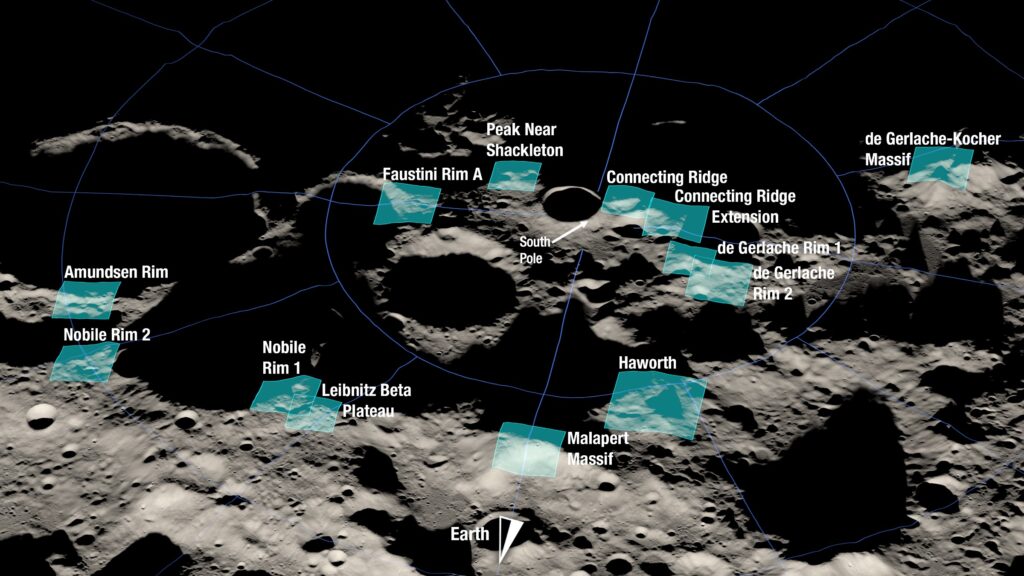NASA’s Artemis 1 mission hasn’t lifted off yet — though it will soon — and we’re already staring down details of Artemis III. Artemis 1 will see NASA test both its Space Launch System (SLS) rocket and the Orion capsule. Assuming all goes well, Artemis II will repeat the 42-day trip around the moon with actual astronauts inside.
Following that (presumed) success, it’s Artemis III up next. That’s when actual human beings are actually returning to the moon. For science reasons, and totally not because we’ve just about set this ball we’re riding on fire.
Artemis III: Return to the Moon
Whenever humans get back there, NASA has already identified the places it would like to land. There are thirteen different locations earmarked for a human visit, all of them with something in common. They all have sunlight exposure for the 6.5 days the manned mission is expected to take. They’re all shaded enough to allow for moonwalks (not that kind). And they’re all placed well enough that the landing vehicle won’t muck up any scientific samples that might be collected.
“Several of the proposed sites within the regions are located among some of the oldest parts of the Moon, and together with the permanently shadowed regions, provide the opportunity to learn about the history of the Moon through previously unstudied lunar materials,” said Sarah Noble. Noble is the Artemis lunar science lead for NASA.
Among the things Artemis III is searching for is lunar ice. That’s the main reason the moon’s South Pole has been selected for human landings, but other geological information will be valuable as well.
“Lunar water ice is valuable from a scientific perspective and also as a resource, because from it we can extract oxygen and hydrogen for life support systems and fuel,” said Jacob Bleacher, NASA’s chief exploration scientist.
The final landing location will be chosen following a discussion with scientists and engineers. There’s still time, what with a manned mission taking place sometime after 2025. Once a consensus is reached, the criteria will be used to choose future landing sites. The capabilities of SpaceX’s Starship, which still aren’t known, will also inform the eventual landing location.




